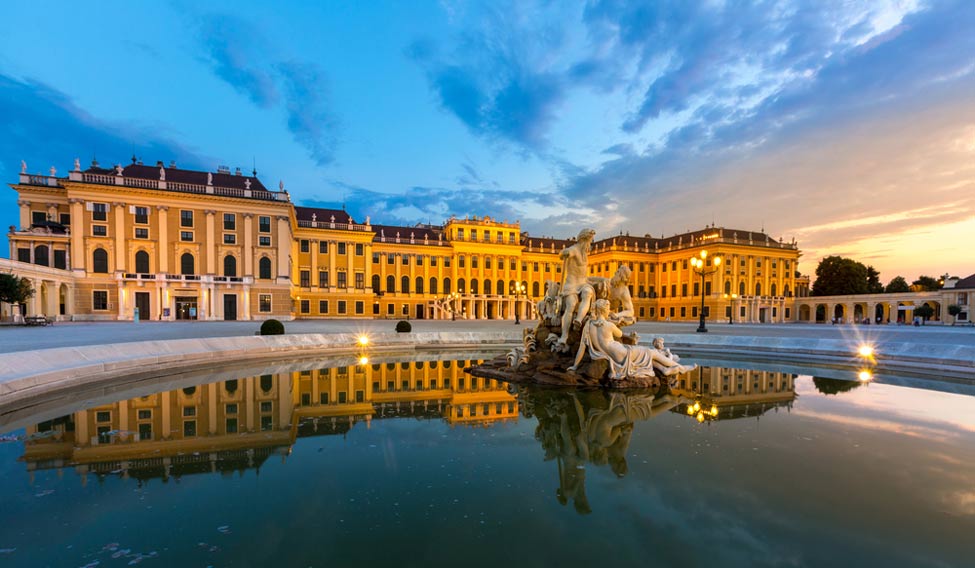The home to the Habsburgs and the Opera, the abode of Gothic, Renaissance, Neo-classical and Art-deco style of architecture, the land of tortes and coffee—there is not one but many ways to describe Vienna. Touted as the most beautiful city in the world, rich in art, history, culture, music, fashion and food, Vienna ticks all the right boxes for a traveller, more so in summer.
It is summer when I arrive in Vienna and the city is in full bloom with tulips, poppies, lavenders, and visitors. While every inch of the Austrian capital is drenched in grandeur, it is the heart of the city that carries its soul. And so, it is from here that I begin my discovery of world’s most beautiful city.
I reach the Opera House in the middle of the afternoon expecting it to be empty, but am greeted by hundreds of visitors waiting for a tour. The tours usually begin at 3pm and are conducted in two languages—German and English. They not only cost a fraction of the real opera but also guarantee a thorough look at the good life of the who’s who of the city. Adorned with chandeliers, covered in carpet, decorated with gilded mirrors and marble busts, the place looks like a grand palace. There are halls lined with exquisite paintings, and corridors that smell of royalty. The most fascinating thing however is the main hall with red velvet seats, a sparkling chandelier, exclusive balconies and boxes and a manually manoeuvred wooden stage. One can only imagine the splendour of the hall when the show is on.
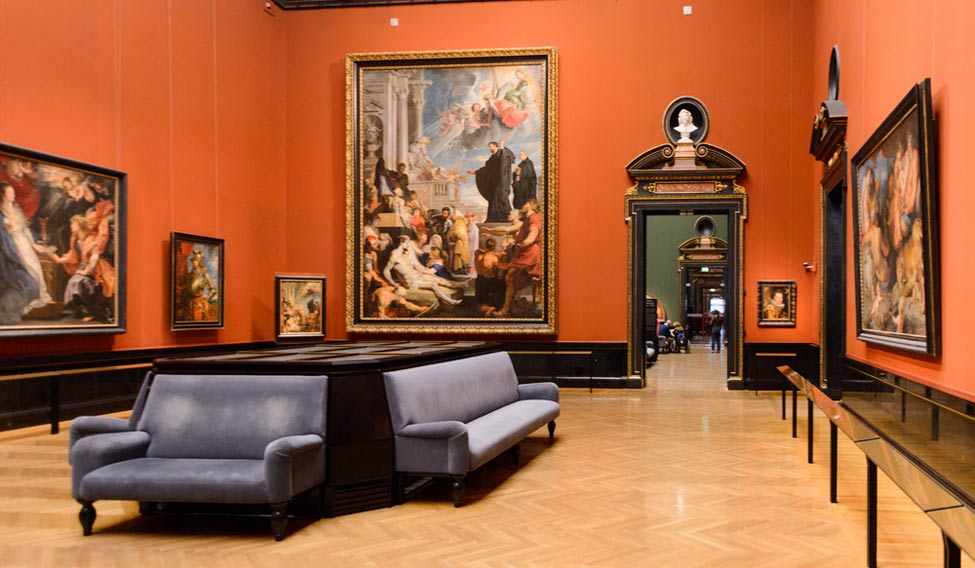 Gallery of the Kunsthistorisches Museum (Museum of Art History)
Gallery of the Kunsthistorisches Museum (Museum of Art History)
“The Viennese Opera house happens to be one of the oldest and most prominent in Europe and has been the launch pad of the likes of John Strauss and Mozart. The tickets here can go up to hundreds of euros for one performance, especially during the peak season and for special shows,” tells our guide, a young lady with a German accent.
“But, if you do not wish to buy such expensive tickets, you can watch the Opera outside, too, where it’s telecast live.”
It is still a few hours to the show but people have already assembled at the spot where the Opera is to be telecast. There are couples holding hands, elderly dressed in their evening best, a musician and his German shepherd, young girls and boys. They are sitting on benches, pavements, on the railing and the road. Nearby men dressed as Mozart and Strauss, complete with a wig and costume, peddle tickets for tonight’s show. I decide to skip both and move on.
A few yards off the Opera house, in Stephensplatz now, I seem to have travelled back in time, as I witness horse-drawn carriages, cobbled roads, and buildings that reek of history and smell of royalty. The buildings that house many famous hotels and high-end stores, are set close to each other and yet stand apart in their style and substance. The gilded fountains, ornate doors, and wrought iron windows add to the old world charm. And in the centre of it all, giving the address its name is the famous St. Stephens Cathedral.
The gothic cathedral, after which the square is named, happens to be the very root of Vienna. Its roof, made up of colourful tiles, carries Vienna’s coat of arms and its halls house the seat of the archbishop. It also has an underground crypt that holds the remains of the imperial family. While you can enter the church when the service is on, you cannot exit until it gets over. You may also light a candle at the altar and climb up its south tower to witness the city spread like an exquisite carpet over the scenic landscape of Austria. I choose to sit for the service and look at the gods instead.
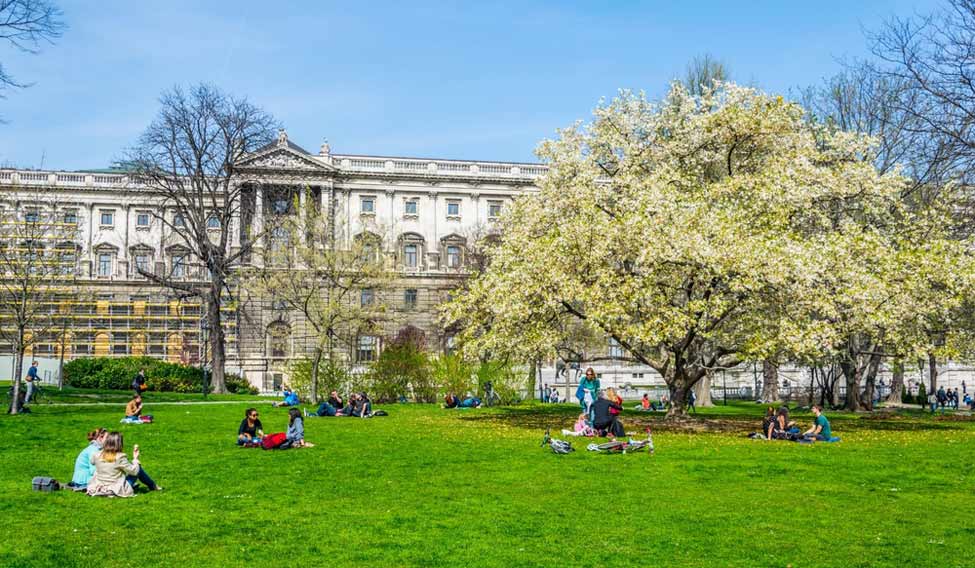 Burggarten park in vienna
Burggarten park in vienna
Walking through Vienna is a bit like walking into the pages of a fairytale, as horses and carriages trot past one ornate palace after another, they transform you to a world that you have only imagined so far. The city centre is bursting with imperial history and Baroque architecture. On this hand you have a gothic building, on that you have a renaissance structure; move a little ahead and you meet an imposing palace, and a little further a full-fledged imperial township: there is never dearth of things to see here.
Out of many things that the six centuries of Habsburg Empire gave Vienna, the most special happen to be its palaces—the two most prominent being Schonbrunn and the Hoffburg.
The Schonbrunn palace lies a little away from the city centre and was used as the summer palace of the Habsburgs. Today, it is famous for vast gardens, royal museums, and even a small zoo. The Hofburg palace, meanwhile, occupies a position of pride right inside the main city and lends its space to gardens, offices, libraries, and also the imperial treasury. What stands out most, however, are the gigantic copper statues installed atop the palace. They have turned green with time and age but the colour only adds more depth to their character.
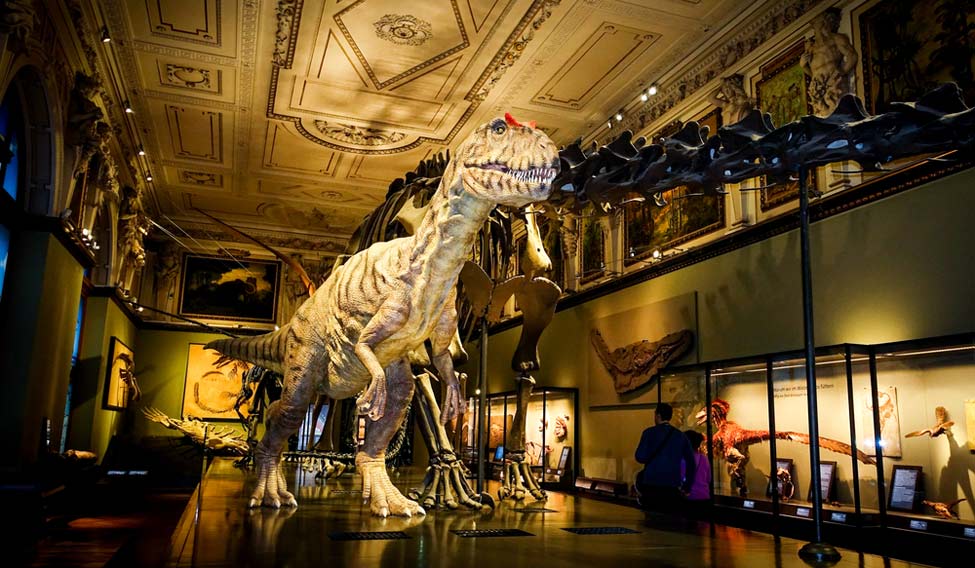 Large dinosaur replica displayed at the Museum of Natural History
Large dinosaur replica displayed at the Museum of Natural History
Art is everywhere in Vienna; so much so that, after a point, it becomes a matter of fact. By the third day I don’t even notice that I may be walking past a building of historical significance, or a famous painting until I spot them in a guidebook later at my apartment. It is also in this book that I discover that the best way to look at everything important in Vienna is to walk along the ringstrasse, or the ring road. From the Parliament to the town hall, from the museums to the Royal Theatre, and even John Strauss and Mozart, everything is situated along the road that was built by Fraz Joseph after razing the palace walls.
My first stop along the road is the Parliament, the largest and the most prominent building along the circle. Built in neo-Greek style, the building is inspired by Zappeion hall in Athens. The most striking feature of the Parliament is the ornate fountain on the stairs with Athena wearing a golden crown. Around her sit, in various poses, allegorical representations of the four most important rivers of the Austro-Hungarian Empire: Danube, Inn, Elbe and Vltava. On the sides, little cupids ride dolphins. The parliament building is open to public and holds tours, too. But I am a little too early for one, so walking on is the best option.
Near the parliament building stands another set of majestic structures—the Natural History Museum that houses natural history and Kunsthistorisches Museum for vintage art. The two identical buildings stand facing each other with an imposing Maria Theresa sitting in the centre, as if watching over the town.
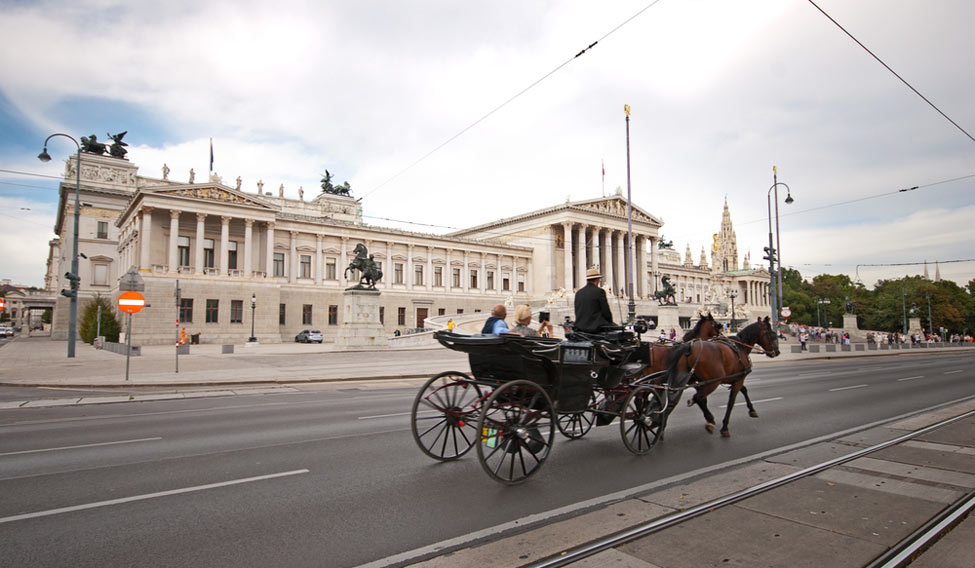 Austrian Parliament
Austrian Parliament
Even though everything seems right next to each other on the ringstrasse—and it is so—there is so much to see that walking becomes difficult. Thankfully, there are enough places to rest your feet. I am greeted by Mozart himself when I walk into one of the many parks that line the ringstrasse. He stands in his trademark pose on a high plinth, obliging many visitors with selfies and pictures. Nearby a mother with a toddler, a few young women, a young man and his dog, are sitting on the soft grass, reading, chatting, spotting clouds, and generally having a good time.
“The Viennese love a slow life. You won’t see them rushing, running, or overworking. An average person leaves office by 4pm and spends the evening socialising at café’s or reading a book in a park.” I remember my guide’s words as I see the people sprawled on the grass, doing nothing. And so, even though the tourist in me is dying to click selfies with Mozart and rush to the next spot, I decide to lie on the grass instead, for when in Vienna, one must do as Viennese do.



